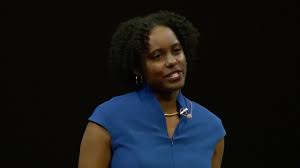In her TEDxJohnCabotUniversity talk, “DEI Training: No ‘One Size Fits All,’” Jenn Lindsay, a social scientist and educator, challenges the notion that a universal DEI (Diversity, Equity, and Inclusion) training program can address the complex needs of different workplaces. Lindsay’s insights offer a fresh approach to DEI training by emphasizing the importance of tailoring these programs to fit the specific needs of diverse teams and organizational cultures. Below, we summarize Lindsay’s main points and offer an analysis of how they can transform DEI initiatives.
The Myth of “One Size Fits All” in DEI Training
Jenn Lindsay opens her talk by addressing a common misconception in DEI training: that a standardized approach is universally effective. According to Lindsay, the diversity of people, workplaces, and cultural backgrounds makes it impossible for a single DEI training model to fit all settings. Her emphasis is on the importance of recognizing and responding to the unique context of each organization and its people.
Key Takeaways:
- DEI training should be adaptable: A single model cannot address the nuanced needs of every team.
- Cultural awareness is essential: Trainers need to consider the specific cultural backgrounds of team members.
- Avoid cookie-cutter solutions: Standardized DEI approaches may overlook critical local and contextual factors.
Lindsay’s perspective challenges organizations to take a more flexible, customized approach to DEI. This means DEI leaders should prioritize understanding the specific dynamics and challenges within their teams. Standardized DEI models can fall short because they don’t account for variations in how people experience inclusion or exclusion. By tailoring DEI training to fit the particular needs of each group, leaders can create more effective, lasting change.
Understanding Cultural and Individual Nuances
Lindsay emphasizes that DEI training must go beyond generalizations and stereotypes to truly connect with participants. Cultural and individual differences impact how people perceive, react to, and engage with DEI initiatives, making it essential for trainers to understand and incorporate these nuances into their sessions.
Key Takeaways:
- Diverse perspectives need tailored approaches: Different backgrounds shape how DEI topics are perceived.
- Incorporate cultural intelligence: Trainers should learn about and integrate cultural nuances into training.
- Avoid assumptions: Respect individual differences within cultural groups rather than applying broad stereotypes.
Recognizing cultural and individual differences is fundamental to effective DEI training. Lindsay’s message underscores the need for cultural intelligence—an understanding of how cultural contexts influence behaviors and attitudes within a workplace. By acknowledging these nuances, DEI training can move beyond superficial conversations and foster meaningful discussions that resonate with participants on a personal level. This approach can lead to deeper engagement and a more profound understanding of DEI principles.
Building Empathy and Inclusivity through Storytelling
Lindsay advocates for using storytelling as a powerful tool in DEI training. She believes that stories can bridge gaps in understanding by fostering empathy among participants. Through storytelling, employees can share their personal experiences with inclusion or exclusion, enabling others to understand their perspectives more deeply.
Key Takeaways:
- Storytelling builds empathy: Sharing personal stories can create a more inclusive environment.
- Real-life experiences resonate: Authentic stories from team members can make DEI concepts more relatable.
- Encourages open dialogue: Storytelling fosters a safe space for participants to share and reflect.
Storytelling humanizes the DEI conversation and allows participants to connect on an emotional level. Stories can break down barriers by highlighting shared experiences and demonstrating the impact of exclusionary practices. Lindsay’s emphasis on storytelling encourages organizations to create a safe space for employees to share, listen, and learn from each other. This strategy can deepen empathy and understanding, helping DEI initiatives feel more relevant and impactful.
Continuous Improvement and Feedback in DEI Training
Finally, Lindsay stresses that effective DEI training is an evolving process that requires continuous feedback and adaptation. Instead of viewing DEI training as a one-time event, she advocates for regular updates based on participant feedback to ensure that it remains relevant and effective.
Key Takeaways:
- DEI is a journey, not a destination: Effective DEI programs evolve with organizational needs.
- Collect and act on feedback: Regular feedback helps trainers adjust and improve their programs.
- Stay flexible and responsive: DEI training should be agile and adapt to changing cultural dynamics.
Lindsay’s focus on continuous improvement highlights the importance of adaptability in DEI work. Organizations that view DEI training as a one-time event risk missing opportunities for growth and refinement. By committing to an ongoing process of feedback and adjustment, organizations can ensure their DEI programs remain responsive to the changing needs of their teams and external social dynamics. This iterative approach helps build a sustainable DEI culture that adapts over time.
Final Thoughts: Shifting DEI Training Toward Meaningful Change
Jenn Lindsay’s talk sheds light on the complexities of DEI training, urging organizations to move away from “one size fits all” models. Her insights encourage a more nuanced, empathetic approach that values cultural awareness, storytelling, and continuous adaptation. For DEI initiatives to be successful, they must resonate with employees on an individual level and evolve alongside organizational growth. Lindsay’s recommendations provide a pathway to more effective DEI programs, ensuring they create lasting, meaningful change in the workplace.





























